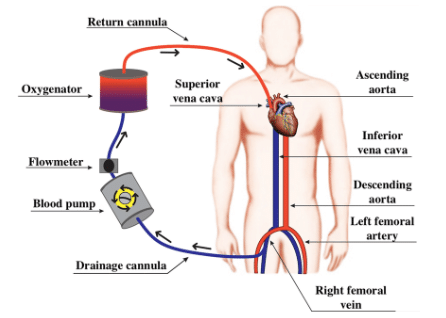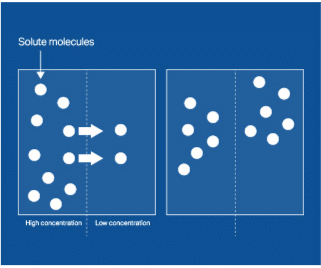Haemodialysis, also known as simply just dialysis, is a therapeutic process used to remove wastes from the body in the case of kidney failure.
What is extracorporeal therapy?
Extracorporeal therapy refers to those therapeutic techniques that take place outside the body. These techniques are characterised by the use of machinery that replicates the function of body organs. Such therapeutic techniques are often used when an individual suffers from organ failure.
Some important extracorporeal therapeutic techniques include-
- Hemofiltration
- Hemodialysis
- Apheresis
- Removal of carbon dioxide via an extracorporeal machine.
- Resuscitation of the cardiopulmonary organs via an extracorporeal device.

In the case of dialysis, an extracorporeal circuit consists of the following components-
- Blood pumps
- Heparin pumps; are required for thinning of blood
- Tube systems
- An artificial kidney
- Monitors to check the rate of blood flow and blood pressure along with air bubble formation.
Dialysis: An overview
Dialysis is a therapeutic process employed when an individual is suffering from kidney failure. In the case of dialysis, waste products such as urea and creatinine are removed through an extracorporeal device. Excess water in the body is also removed during the process of dialysis. This whole procedure is based solely on the principle of blood purification.
Hemodialysis is usually performed on a routine basis at outpatient clinics. This procedure is complex and must be overseen by trained professionals. Individuals suffering from kidney failure can also choose to have dialysis done at home, however, this option is time-consuming and cost-inefficient.
Medical uses
Hemodialysis is part of renal replacement therapy and in the case of acute kidney failure, patients are required to go for routine dialysis appointments. The frequency of dialysis is directly proportional to the height and weight of the individual. Some of the important parameters that kidney specialists or nephrologists take into consideration before performing dialysis on an individual are as follows-
- Frequency of the treatment
- Length of the treatment
- The size of the dialyzer required
- Dialysis solution and blood flow rates
- Adjustment of the dialyzing solution in terms of bicarbonate, sodium and potassium levels.

Complications
Even though dialysis is a procedure that has gone a long way in helping those who suffer from kidney failure and increasing their life expectancy, it comes with its own set of disadvantages and complications which are as follows-
- Requirements such as dialyzers, good quality water and electricity along with trained professionals cannot be met by most people suffering from kidney failure.
- Undergoing this routine procedure not only restricts independence but also makes patients dependent on caregivers.
- Removal of excess body fluids leads to severe nausea, headaches and cramps. This is usually known as the dialysis washout.
- Exposure to the circulatory system on a routine basis puts patients at risk of microbial entry and infection.
- Patients are at risk of venous needle dislodgement which results in rapid loss of blood and is fatal in most cases.
- Incidence of thrombocytopenia due to constant exposure to heparin.
- Some individuals exhibit extreme anaphylactic reactions to the artificial kidney.
- Cardiovascular complications are a common side effect of hemodialysis.
- Folate deficiencies and electrolyte imbalances are also some of the side effects often seen in patients undergoing this procedure.
Dialysis mechanism
Dialysis works on the principle of diffusion of blood across a semi-permeable membrane. The mechanism behind the working of dialysis can be elaborated as follows-
- Solutes are made to diffuse across a semi-permeable membrane.
- Blood and the dialysis solution (also known as dialysate) flow in opposite directions with respect to the extracorporeal circuit. This is known as counter-flow.
- Counter-flow is responsible for the maintenance of the concentration gradient across the semi-permeable membrane. It also optimizes the rate of dialysis.
- Following this, a pressure gradient is created to induce the flow of water and solutes across the semi-permeable membrane.
- The removal of fluids using hydrostatic pressure to create a pressure gradient is known as ultrafiltration.
- The dialysate is usually composed of sodium, potassium and bicarbonate salts to maintain blood pH and induce diffusion of solutes across the dialysing membrane.

Types of dialysis
Based on the frequency of treatment, dialysis can be classified into three types which are-
- Conventional dialysis- the patient is required to undergo the procedure at least thrice a week. The process is characterised by the use of a catheter connected to the dialysis fistula or graft.
- Daily dialysis- the patient undergoes the procedure on a daily basis. This type of dialysis is less painful and is simplified by the use of catheters.
- Nocturnal dialysis- individuals are required to undergo the procedure at least three-six times per week. The dialysis occurs while the person sleeps and each dialysis session lasts for up to ten hours.
Conclusion
Dialysis is an extracorporeal therapeutic procedure that is employed for the removal of bodily wastes due to the non-functioning of the kidney. This procedure works on the principle of diffusion across a semi-permeable membrane. It is used extensively to treat those who suffer from kidney failure, however, it does come with certain complications. The benefits of this procedure far outweigh the complications.
16/06/2022






